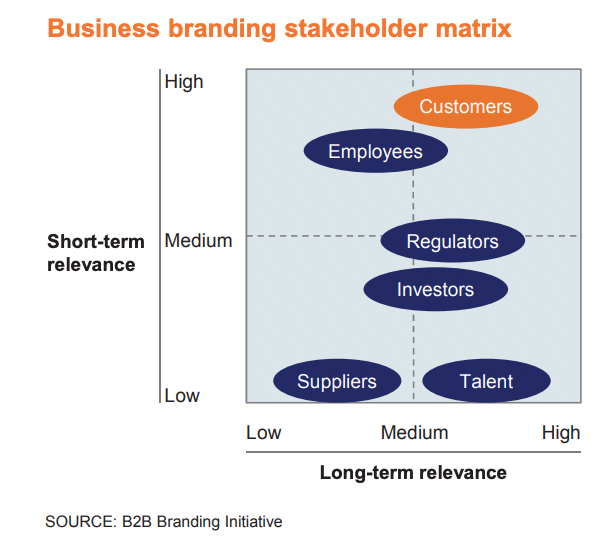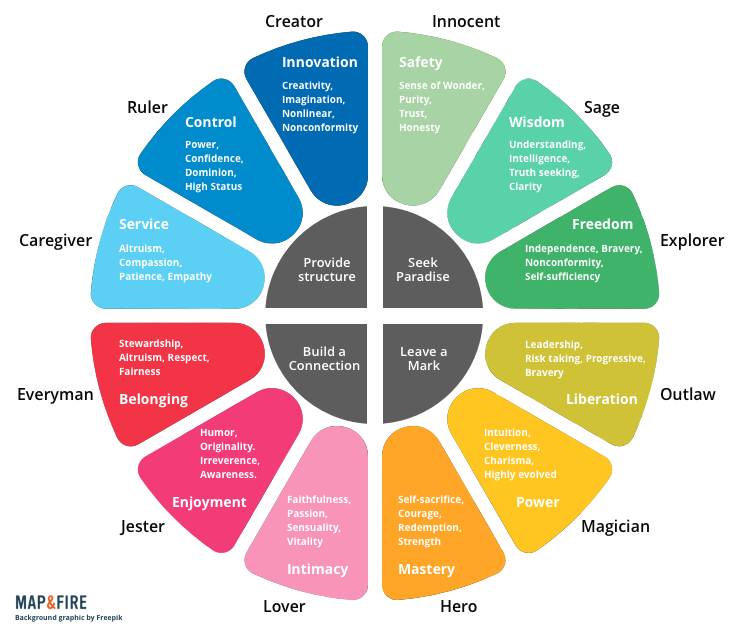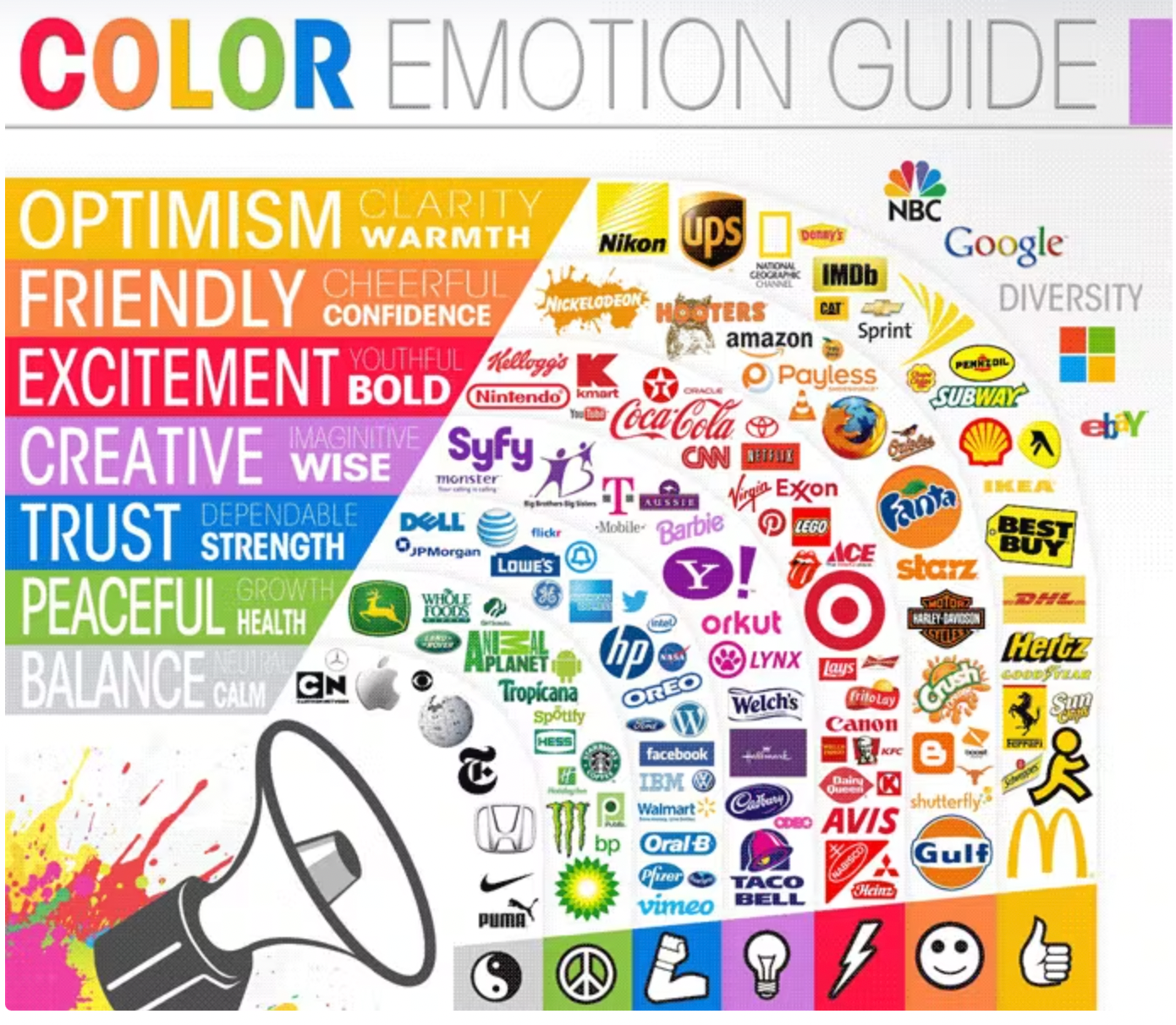How to Build a Brand
Learn how to build a brand effectively by understanding its significance beyond logos and colors. Small business owners too often prioritize marketing and sales, neglecting to recognize the importance of cultivating both their business and their brand in order to make a real impact in the marketplace.
Branding goes beyond graphic elements and encompasses the complete identity of a business, providing a North Star to its stakeholders both internally and externally.
In today's landscape, branding is especially important, as consumers are increasingly flooded with digital messaging. While this abundance of choices benefits consumers, it poses challenges for businesses.
Together, let’s go over the key steps to successful brand building and avoid the enduring challenges that arise from neglecting your brand identity. By investing in branding efforts and conveying messages that align with your brand, you can attain clarity and create desirable outcomes for your business. Take advantage of the opportunities provided by new digital media and ensure your brand stands out in a saturated market.
What is branding?
At its core, a brand is a differentiation mechanism. It is a product, service or concept that is publicly distinguished from other products, services or concepts so that it can be easily communicated and usually marketed. Branding is the process of creating and disseminating the brand name, its qualities and personality. It encompasses a wide variety of factors, from packaging to editorial tone to emotional connotations, evoking feelings like safety or excitement. While the brand name exists objectively, the brand itself resides within the minds of individuals, shaped by their experiences with your brand over time.
A strong indication of a brand's growth is when customers start using alternative names to refer to it. For instance, "FedEx" or "Tar-jé" for Federal Express and Target - these nicknames reflect the establishment of a customer-product relationship, reinforcing desired brand attributes like speed, efficiency, or affordability.
A well-defined brand identity strategy acts as a guiding force, ensuring consistency in marketing efforts over time. This strategy should align with specific core values that complement the organizational culture. The associations formed with the brand contribute to establishing its unique identity, informing brand strategies, and ultimately building brand equity.
Why should you care about branding your company?
The significance of developing a robust brand for your company warrants careful consideration. While brand values hold particular importance for Genzennials, boomers and Gen Xers are particularly brand loyal, making brand development relevant to all demographics.
Branding is a North Star
During the 28-month period of the pandemic, brands had to do some real soul searching to figure out how their values and unique positioning could pivot to meet new customer needs while remaining true to who they were. A climate that demanded more compassionate consumer interactions led to pet brands sending sympathy flowers to grieving dog owners, CPG brands pivoting production lines to manufacture germ-killing products, and brick-and-mortar retailers transforming parking lots into touch-free pick-up zones.
These pivots were necessary at the time, but also took a lot of work on the backend to ensure brand identity didn’t get lost. Brands with especially robust identities were able to better weather the storm because they were able to stretch their offerings without losing themselves. So while threats of a recession might tempt some to forego brand strategies for more performance-driven campaigns, remember that customers can't decide to pick (and remain loyal to) your brand if they don’t understand who you are. In fact, ongoing studies on brand development by McKinsey have shown that companies with strong brand perceptions consistently exhibit higher EBIT margins compared to their counterparts.
Branding matters across business types
And lest you dismiss these guidelines as applying only to B2C organizations, the importance of brand development extends to both B2B and B2C companies, albeit with slightly different emphases.
On one hand, consumers primarily appreciate brands as conveyors of image and emotion, while on the other, business customers typically attribute greater importance to other brand functions such as risk reduction and information efficiency. Similarly, small and medium-sized enterprises (SMEs) too often dismiss branding as a vanity exercise reserved for Fortune 500 companies, which has measurably impeded their progress. Recent studies indicate that SMEs have yet to prioritize branding efforts, hindering their growth potential.
Branding impacts all stakeholders (not just customers)
It is vital to recognize that brand impact extends beyond customers and influences all stakeholders.

Decision-makers, from investors to suppliers to potential hires regard a company's brand as a central, rather than peripheral, element of a company's proposition. A survey by B2B Branding Initiative recently revealed that brand is considered on par with sales efforts as an influential factor in decision-making, and marketers should adopt a wide view of the stakeholders their brands should speak to if they want to remain relevant and competitive.
Branding and performance work hand in hand
Recently, advertisers have begun to think of branding and performance (known as "brandformance," according to AdAge) as two sides of the same coin. Marketers are increasingly measuring the impact of aggregated spend across the consumer decision-making journey - from awareness to nurture to purchase and back again - as traditional purchase funnels have become nonlinear and influenced by evolving consumer buying patterns.
Across industries and sales processes, prioritizing brand development offers numerous benefits and aligns with evolving market dynamics. Whether appealing to diverse consumer segments, bolstering corporate image, or capitalizing on stakeholder influence, fostering a strong brand holds immense potential for businesses in today's dynamic landscape.
How to build a brand
Market Research
In order to establish a compelling value proposition, conducting comprehensive research on your target audience is imperative. By delving deep into their preferences, needs, and behaviors, you can gain valuable insights to inform your brand strategy. Understanding the intricacies of your target audience will enable you to develop a value proposition that resonates with their desires and positions your brand as an optimal solution.
Some of the smartest players, such as Hilti, a maker of professional tools, have their sales force doing double duty as distributors and hands-on market researchers at their customers’ construction sites. This type of research is crucial to building a relevant brand but it is just as important to remember it’s just research and not shift value props or branding tone according to market fads or the preferences of a small data set.
In parallel, conduct a thorough analysis of your competitors. Assessing their offerings, market positioning, and strategies will provide insights into the competitive landscape and identify opportunities for capturing market share. By understanding the strengths and weaknesses of your competitors, you can position your brand distinctively and capitalize on untapped market potential.
Finally, once market and competitor analyses have been conducted, divide your market research into segments to ensure your brand speaks to more than just one narrow target audience. The real challenge here will be to maintain a coherent brand identity while speaking to separate segments. While different, all segments should exhibit a strong affinity towards your value proposition, allowing for focused marketing efforts and enhanced brand resonance. By tailoring your messaging and engagement strategies to each target segment, you can cultivate a loyal customer base and drive brand growth.
By gaining a deep understanding of your target audience, exploring the competitive landscape, and identifying related target segments, you can craft a compelling value proposition and seize opportunities for market share growth. This research-driven approach positions your brand for long-term success and establishes a strong foothold in the market.
Brand Mission and Personality
When creating an identity for your brand, remember that you’re giving it something to stand for which, in turn, gives your company a purpose. A brand identity — one with a face, trust, and a mission — attracts people who agree with what your brand has to offer. But once these people become customers, that same brand identity gives them a sense of belonging. A good product attracts customers, but a good brand generates advocates.
The first step in building a brand after having done thorough market research, is to clearly define its personality, with human characteristics that fit the brand. Though this process might feel daunting, it doesn’t have to. Remember who you are and what you hope to provide your customers with - the rest should fall into place. Categories like Jung’s brand archetypes, for example, can be especially helpful to get started. Iconic brands how have used the archetypes as guidelines include REI (explorer), Dyson (magician), TED Conferences (sage), and more.

Once you understand the overall tone of your brand, make sure you develop a solid, achievable, concise mission statement that your brand personality can align with. Alignment between the brand personality and mission is vital. The brand mission encapsulates the organization's purpose and promise. It should reflect the brand's value proposition and overarching strategic objectives.
Second, establish a distinctive brand voice. Having a brand identity doesn't just make your product more memorable; it makes your brand more authoritative in the marketplace. A brand that establishes a face, and maintains that face consistently over time, develops credibility among its competitors and trust among its customers. This will involve selecting an appropriate tone, language style, and messaging strategy that consistently aligns with your brand personality and resonates with your target audience. A cohesive brand voice across all touchpoints enhances brand recognition and fosters customer loyalty.
Third, ensure brand consistency and authenticity. All brand communications, ranging from marketing campaigns to customer interactions, should embody the defined personality and mission. This consistency is central to building trust and credibility with customers, reinforcing the brand's identity in their minds.
Building a compelling brand personality and mission is a strategic endeavor that requires a meticulous and holistic approach. By clearly defining the brand personality, aligning it with the brand mission, conducting comprehensive market research, establishing a distinctive brand voice, and ensuring consistency and authenticity, organizations can cultivate a strong brand identity that deeply resonates with their target audience.
Choose the look of your brand and logo
A brand logo design is probably one of the first things that come to mind when you think about building a new brand. And for good reason: it’s the face of your company, after all, and could potentially be everywhere your brand is. Remember, the logo should fit into the brand purpose and personality, not the other way around, so be sure you have a strong foundation before starting this work. Try to create a logo that is unique, identifiable, readable, and scalable to work at all sizes (widget, print assets, social media frames, video, digital banners, favicon, etc.)
Equally important is the immediate emotion conjured up by your color scheme which, again, should align with your overall brand identity. Use color psychology as a guide, as in the graphic below.

Source: The Logo Company
Apply your brand consistently across markets
Building a strong brand requires, arguably above all else, maintaining internal and external consistency of brand values, while remaining flexible. Marketers must keep in mind the importance of consistency while allowing for segmentation and customization. Two notable examples, IBM and American Express, highlight the effectiveness of this approach.
IBM, a leading provider of information technology and services, has successfully adapted its value proposition while upholding brand consistency. Anchored by the "Smarter Planet" strategy, IBM embraces the data-driven era across various domains. This strategy guides product development, employee engagement, and external communication, encompassing stakeholder engagement programs and global marketing campaigns. IBM has developed multiple platforms, including Smarter Education, Smarter Energy, and Smarter Cities, ensuring a consistent brand experience across touch points. Notably, they showcased films on the future of cities at the esteemed British Film Institute and created an interactive exhibit at Disney's Epcot theme park. Through the Smarter Planet approach, IBM showcases its ability to balance innovation and sustainability, positioning itself as one of the world's most valuable brands.
American Express offers another compelling case with its introduction of "Small Business Saturday" to enhance brand perception among small and medium-sized enterprises (SMEs). They put their money where their mouth is and found a way to make a real impact on their customers’ businesses at scale. Even President Obama championed the event by promoting it on Twitter, encouraging Americans to "shop small." This initiative showcases American Express's commitment to supporting small businesses and positions the brand as their advocate, while maintaining a “pro business” halo that can appeal to their customers across business types.
How Not To Build a Brand
While following the necessary steps to build a strong brand identity is essential, it is equally critical to avoid certain practices that can jeopardize or undermine your brand's success. Here are some common pitfalls to avoid.
Inconsistent communication
Sending mixed messages to your customers can be tempting when follwing trends or shifting market preferences; but while it’s important to remain flexible and engage in regular A/B testing on campaign messaging, they always need to make sense within the context of your brand. Remember that just because something makes sense to you, it does not necessarily mean it will resonate with your customers. Aligning your communication with your target audience's needs and brand values is crucial.
Competitive Mimicry
It can be tempting to imitate competitors with exemplary branding, but that is not the way to long-term success. Instead, consider their overall strategies and add your own unique twist to stand out within your industry. By incorporating your brand's distinct elements, you can capture and retain the attention of your target market effectively.
Scaling without Intention
As your brand expands into new channels, resist the temptation to blindly follow trends that do not align with your brand's DNA. Scaling your brand identity successfully requires building upon your original foundation rather than creating an entirely new brand narrative. Strive to iterate off your existing "song sheet" and adapt it to new contexts, ensuring that your brand's essence remains intact.
Brand Building Best Practices and Trends
Establishing a powerful brand entails the development of effective practices that resonate with decision-makers and customers, and effectively convey your value proposition to bridge the gap between your brand messages and the needs of your customers.
Corporate reputation managers often emphasize corporate social responsibility and sustainability, but recent marketing science research is increasingly finding that customers prioritize perceived honesty and specialized expertise when choosing between brands. Aligning your brand messaging with these core concerns grants you a competitive advantage. Fact-based business branding offers a unique opportunity to address this gap, positioning your brand as the ideal choice for decision-makers.
Of course sustainability still remains a key trend that marketers should continue to explore to identify untapped growth opportunities. Go beyond surface-level initiatives and delve into aspects such as affordability, durability, and circularity. By aligning your brand with these trends in a meaningful way, you can differentiate yourself and establish solid relationships with your customers. Remember, sustainability encompasses ethical factors, including human and workers' rights, alongside environmental concerns, so get in the weeds. The more authentic and consistent your commitment to sustainability, the higher your value for consumers, as early adopters of fact-based branding and a comprehensive understanding of sustainability trends gain disproportionate rewards.
Finally, this may seem obvious but make every effort to use as descriptive, precise, and vivid language as possible when working on the foundational aspects of your brand : graphic charter, editorial guidelines, brand mission, etc. It will help ensure the longevity of your identity as newer team members get acquainted with your brand, and will be that much more memorable for your customers. A recent AdAge article argued for “concrete language to promote visualization and lasting impressions” for ad campaigns, but we would argue the same goes for foundational brand documents.
How new media channels can help tell your brand story
Over the past three years, CTV advertising has emerged as a powerful tool to affordably enhance brand storytelling for businesses of all sizes. Forward-thinking brands are increasingly using video marketing across social media platforms and streaming services to create momentum among specific target groups with limited exposure to traditional media. CTV advertising especially, enables brands to deliver tailored messages to their desired audiences, on the biggest screen in the home, fostering deeper connections and amplifying their brand stories. By leveraging the capabilities of CTV, brands can effectively targets and engage with customers, ultimately driving brand affinity and influencing purchase decisions.
Want to learn more? Visit our Resource Center!


